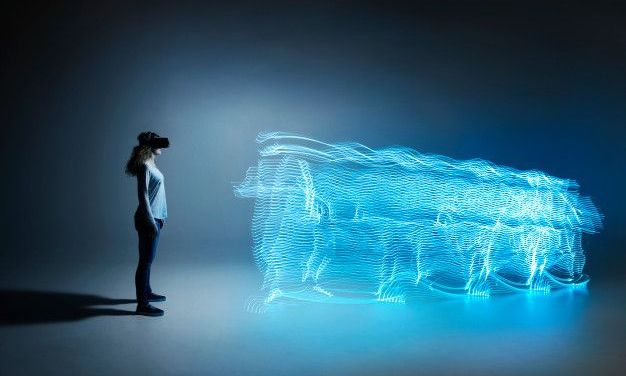Drone package deliveries are flying mail, parcels, medicine and parts in many countries. Great information on the delivery drones and projects by Zipline, Wing, Amazon and Postal companies.


VICE gained exclusive access to a small fleet of US Army bomb disposal robots—the same platforms the military has weaponized—and to a pair of DARPA’s six-foot-tall bipedal humanoid robots. We also meet Nobel Peace Prize winner Jody Williams, renowned physicist Max Tegmark, and others who grapple with the specter of artificial intelligence, killer robots, and a technological precedent forged in the atomic age. It’s a story about the evolving relationship between humans and robots, and what AI in machines bodes for the future of war and the human race.
About VICE:
The Definitive Guide To Enlightening Information. From every corner of the planet, our immersive, caustic, ground-breaking and often bizarre stories have changed the way people think about culture, crime, art, parties, fashion, protest, the internet and other subjects that don’t even have names yet. Browse the growing library and discover corners of the world you never knew existed. Welcome to VICE.
Connect with VICE:
Check out our full video catalog: http://bit.ly/VICE-Videos
Videos, daily editorial and more: http://vice.com
More videos from the VICE network: https://www.fb.com/vicevideo
Like VICE on Facebook: http://fb.com/vice
Follow VICE on Twitter: http://twitter.com/vice
Follow us on Instagram: http://instagram.com/vice
The VICE YouTube Network:
VICE: https://www.youtube.com/VICE
MUNCHIES: https://www.youtube.com/MUNCHIES
VICE News: https://www.youtube.com/VICENews
VICELAND: https://www.youtube.com/VICELANDTV
Broadly: https://www.youtube.com/Broadly
Noisey: https://www.youtube.com/Noisey
Motherboard: https://www.youtube.com/MotherboardTV
VICE Sports: https://www.youtube.com/NOC
i-D: https://www.youtube.com/iDmagazine
Waypoint: https://www.youtube.com/Waypoint
Welcome your new family member.

For the next installment of the informal TechCrunch book club, we are reading the fourth story in Ted Chiang’s Exhalation. The goal of this book club is to expand our minds to new worlds, ideas, and vistas, and The Lifecycle of Software Objects doesn’t disappoint. Centered in a future world where virtual worlds and generalized AI have become commonplace, it’s a fantastic example of speculative fiction that forces us to confront all kinds of fundamental questions.
If you’ve missed the earlier parts in this book club series, be sure to check out:
PepsiCo’s Senior VP of R&D, Dr. Ellen de Brabander, joins me on this ideaXme (http://radioideaxme.com/) episode to talk about running the R&D engine for a $200 billion company, the parallels between pharma and food in terms of increasing customization / personalization, and her future visions for the $8 trillion global food and beverage space — (Personal caveat — While I avoid processed foods, one cannot ignore the place at the table that “big food” will have in crafting and investing in the future of health, wellness, and longevity) — https://www.youtube.com/watch?v=tDSiVlKNnRA&t=1 #Ideaxme #Pepsi #Nutrition #Research #Science #Health #Wellness #Sustainablity #Longevity #FritoLay #Tropicana #QuakerOats #Gatorade #Aquafina #MountainDew #Doritos #Cheetos #Ruffles #Tostitos #Fritos #Biotech #LifeExtension #Aging #IraPastor #Bioquark #Regenerage
Ira Pastor, ideaXme exponential health ambassador, interviews Dr. Ellen de Brabander, Senior Vice President Research and Development at PepsiCo.
Ira Pastor Comments:
Today we are going to segue into the food industry, which is a fascinatingly complex and diverse set of businesses that supplies most of the food consumed by the global population.
In 2020, food, needless to say, is much more than just calories.

The Wuhan Coronavirus continues its deadly worldwide expansion, with a fifth death outside of China, and a cruise ship that docked in Cambodia had a passenger that tested positive, but flew back to Malaysia anyway. Unbelievable!
“A further 70 people on the Diamond Princess cruise ship quarantined in Japan on Sunday tested positive for Covid-19, bringing the total to 355, as countries began to fly their citizens on the ship home.
There is also growing concern over possible infections among people who disembarked from the MS Westerdam in Cambodia on Friday, after it was confirmed that one passenger, who later flew to Malaysia, tested positive for the virus.
Four other deaths have occurred outside mainland China – in Japan, Hong Kong, the Philippines and France.”
A taxi driver has died from the coronavirus in Taiwan, marking the first such death on the island and the fifth fatality outside mainland China from an epidemic that has curbed travel and disrupted global supply chains.
The health minister, Chen Shih-chung, said during a news conference on Sunday that the deceased was a 61-year-old man who had diabetes and hepatitis B. Taiwan has to date reported 20 confirmed cases.

Billionaire investor Ron Baron believes Tesla has the potential to hit “at least” $1 trillion in revenue in 10 years and continue to grow from there.
“It’s nowhere near ended at that point and time,” he said Tuesday morning on “Squawk Box.” “There’s a lot of growth opportunities from that point going forward.”
Baron, whose eponymous investment firm holds nearly 1.63 million Tesla shares, said Baron Capital will not sell a single share of company. Tesla’s recent run, he said, is “just the beginning” as he believes the company “could be one of the largest companies in the whole world.”


Many of you are way ahead of me on this topic. I design 3D printed parts for aircraft, but I didn’t think that functional, transplantable 3D printed human organs were this advanced. This article is about a heart, but it is currently only the size of a rabbit heart. Sizing it up to human size and testing are next, but this is much farther along than I expected.
Rapid creation of replacement organs, using the patient’s own cells to circumvent the body rejecting the transplant, is a direct contributor to superlongevity.
Researchers from Tel Aviv University have created the world’s first 3D printed heart, using cellular materials from the patient.